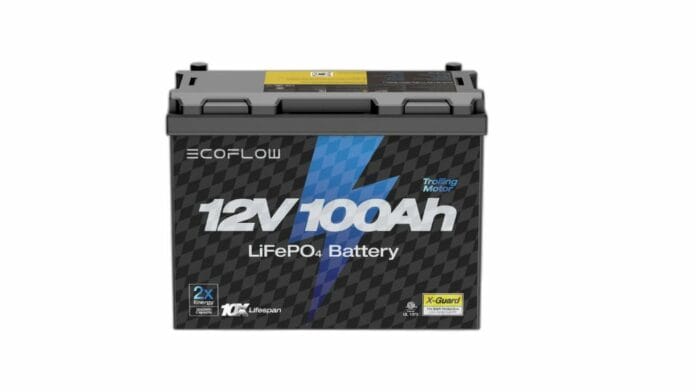If you’re using lithium batteries in anything from gadgets to solar systems, understanding their voltage is key to keeping them running smoothly. A lithium battery voltage chart can help you track charge levels and avoid issues like overcharging or deep discharging. By keeping an eye on your battery’s voltage range, you’ll boost its lifespan and ensure your devices perform at their best. In this guide, we’ll list out these charts to help you extend battery life and keep your devices running smoothly.
Why Voltage Matters for Lithium Batteries?
The main factor behind the performance of a lithium battery is voltage. It controls the battery’s aging over time and the current passing to your gadgets, appliances, and other electronics. By lowering the risk of deep discharge or overcharging, applying the correct voltage settings helps you prevent permanent harm. Stable power and a longer-lasting battery follow from consistent voltage maximizing efficiency as well. To apply the right voltage, you need to go through the charts or graphs.
Different Types of Lithium Battery Voltages
Voltage directly influences power output, battery life, and charging efficiency. Knowing it keeps your energy source constant and helps you prevent deep discharges.
Li-ion Batteries: With a max charge voltage between 4.2 and 4.3 volts per cell, lithium-ion batteries are Popular choices for cellphones, laptops, and other portable devices because they have high energy density and effective power output.
LiPo Batteries: LiPo batteries have identical charging ranges and show the same advantages as Li-ion Batteries. Their flexible pouch design that fits small electronics or drones and light weight construction define them. In regards to LifePo4 vs Lithium ion batteries, the latter is highly energy dense while the former is more stable and safe.
LiFePO4 Batteries: LiFePO4 batteries have a reduced max charge voltage of about 3.6 to 3.8 volts per cell. Less prone to thermal runaway and naturally stable, this chemistry makes them safer than some other lithium-based variations. For demanding uses like solar energy storage or backup systems, they also last longer and resist severe discharges, providing you with a consistent power source.
A good example of a LiFePO4 battery is the EcoFlow 12V 100Ah Lithium Trolling Motor Battery. It has a voltage range of 10V-14.6V and 1280Wh energy. It is UL1973 certified for its cell-to-chassic (CTC) design for high-end durability. It features EcoFlow’s unique X-Guard battery management system to protect the battery from overloading. Get the EcoFlow 12V 100Ah Lithium Trolling Motor Battery for reliable power to your outdoor adventures in a compact form.
What Is the State of Charge and Discharge?
Managing of the state of charge and discharge of a lithium battery is absolutely vital. It establishes your battery’s running efficiency as well as its lifetime.
State of Charge (SoC)
The state of charge (SoC) is the difference in energy left in your battery relative to its whole capacity. Usually stated as a percentage, a SoC of 100% indicates that the battery is completely charged. Tracking The lithium battery SoC chart will help you estimate running time, schedule use, and prevent running the battery into potentially dangerous low-voltage levels. You can prevent sudden shutdowns of computers or appliances with a basic understanding of the lithium battery state of charge chart.
| SOC (100%) | Voltage (V) |
| 100% | 3.60-3.65 |
| 90% | 3.50-3.55 |
| 80% | 3.45-3.50 |
| 70% | 3.40-3.45 |
| 60% | 3.35-3.40 |
| 50% | 3.30-3.35 |
| 40% | 3.25-3.30 |
| 30% | 3.20-3.25 |
| 20% | 3.10-3.20 |
| 10% | 2.90-3.00 |
| 0% | 2.00-2.50 |
State of Discharge (DoD)
This shows the used-through fraction of the battery capacity. If done too often, a greater DoD indicates that you have used more of the battery’s energy, which can stress its chemistry. Particularly for batteries that degrade faster with deeper discharges, maintaining a prescribed DoD can increase lithium battery lifespan and prevent performance problems.

Lithium Battery Voltage Chart by Type
Lithium battery voltage charts reveal how much charge is left and whether the battery is performing as intended. This guide are voltage chart of lifepo4 vs lithium ion batteries, ranging from a 12 volt lithium battery voltage chart to 48 volts one.
12V Battery Voltage Chart
A 12V LiFePO4 battery charges up to 14.6V and drops to 10V when fully discharged. It’s often a solid alternative to lead-acid batteries for off-grid solar or RV setups. Here is the 12V lithium battery voltage chart:
| Capacity (%) | 12V (Li-ion) | 12V (LiFePO4) |
| 100% (charging) | 13.6V | 14.6V |
| 100% (resting) | 13.4V | 13.6V |
| 99% | 13.4V | 13.4V |
| 90% | 13.3V | 13.3V |
| 80% | 13.3V | 13.2V |
| 70% | 13.2V | 13.2V |
| 60% | 13.1V | 13.1V |
| 50% | 13.0V | 13.0V |
| 40% | 13.0V | 13.1V |
| 30% | 12.9V | 13.0V |
| 20% | 12.8V | 12.9V |
| 10% | 12.0V | 12.0V |
| 0% | 10.0V | 10.0V |
24V Battery Voltage Chart
Formed by connecting two 12V batteries in series or using a dedicated 24V pack, the system charges fully at 29.2V and dips to 20V at low capacity. This higher voltage means lower current draw and improved efficiency. It suits larger devices like a portable power station and mid-range solar projects. You can check the lithium voltage chart to track its usage:
| Capacity (%) | 24V (Li-ion) | 24V (LiFePO4) |
| 100% (charging) | 27.2V | 29.2V |
| 100% (resting) | 26.8V | 27.2V |
| 99% | 26.8V | 26.8V |
| 90% | 26.6V | 26.6V |
| 80% | 26.6V | 26.4V |
| 70% | 26.4V | 26.4V |
| 60% | 26.1V | 26.2V |
| 50% | 26.0V | 26.0V |
| 40% | 26.0V | 26.2V |
| 30% | 25.8V | 26.0V |
| 20% | 25.6V | 25.8V |
| 10% | 24.0V | 24.0V |
| 0% | 20.0V | 20.0V |
48V Battery Voltage Chart
A 48V setup hits 58.4V at full charge and goes down to 40V when depleted. It reduces amperage, saving you money on wiring and hardware. With a large battery storage capacity, 48V lithium products are for used for solar installations and robust backup power systems.
| Capacity (%) | 48V (Li-ion) | 48V (LiFePO4) |
| 100% (charging) | 54.4V | 58.4V |
| 100% (resting) | 53.6V | 54.4V |
| 99% | 53.6V | 53.6V |
| 90% | 53.2V | 53.2V |
| 80% | 53.1V | 52.8V |
| 70% | 52.8V | 52.8V |
| 60% | 52.3V | 52.4V |
| 50% | 52.2V | 52.2V |
| 40% | 52.0V | 52.0V |
| 30% | 52.5V | 52.0V |
| 20% | 51.2V | 51.6V |
| 10% | 48.0V | 48.0V |
| 0% | 40.0V | 40.0V |

How to Measure Lithium Battery Voltage
Determining the charge lithium ion battery level and general functionality of a lithium battery requires measuring voltage. This allows you to see any problems, such as unsafe drops or over discharge.
Get the Right Voltmeter
Ensure you use a digital multimeter (DMM) or voltmeter that spans the voltage range of your lithium battery. Most lithium-ion batteries operate at voltages between 3.0V (discharged) and 4.2V (fully charged), so select a meter that can measure within this range, typically with a 20V DC scale.
Tip: For an autoranging multimeter, it will automatically select the correct range. For a manual multimeter, make sure you set it to a range that includes the expected battery voltage, such as 20V DC.
Power Everything Down
Turn off all connected devices that are using the battery before measuring. This helps to avoid any misleading readings caused by the battery supplying power to a load (like a circuit or gadget).
Why?: Active circuits can draw current, which may give a false reading. Plus, measuring with a device under load can cause electrical risks.
Connect the Voltmeter Leads
Attach the black lead to the negative terminal of the battery (typically marked with a “–” or black color).
Attach the red lead to the positive terminal of the battery (usually marked with a “+” or red color).
Important: Double-check the lead connections before measuring. If you’re unsure which terminal is which, consult the battery or voltmeter’s manual.
Check the Display
Turn on the multimeter and observe the voltage reading on the display.
Wait for the reading to stabilize: The voltage should settle within a few seconds. If your meter has multiple ranges, ensure you are using the correct range setting that corresponds with your battery’s voltage.
Interpret and Compare
Analyze, Interpret, and Compare. Match the voltmeter reading to advised voltage ranges or graphs. This clarifies whether the battery is critical low point, needs charging, or is in good condition.
Conclusion
A lithium battery voltage chart is a valuable tool for ensuring safer operation and extending your battery’s lifespan. By clearly mapping out the optimal voltage ranges, it helps you avoid deep discharges and prevent costly damage. Staying within these recommended voltage limits not only keeps your battery healthy but also guarantees consistent power for your devices, ensuring they run efficiently for longer. Monitoring your battery’s voltage levels is an easy way to maximize performance while protecting your investment in the long run.
FAQs
What voltage should a lithium battery be?
Lithium-ion batteries usually have a nominal voltage of roughly 3.6 to 3.7 volts per cell. Depending on surface coatings and electrolyte additions, the maximum charge voltage can range from 4.2 to 4.3 volts. The usual end-of-discharge falls between 2.8 and 3.0 volts. Although higher nominal ratings usually indicate additional capacity, they depend on the exact chargers set for the proper full-charge voltage.
What voltage is 50% for a lithium battery?
A standard lithium-ion battery will completely charge to roughly 13.6V. 50% of it will be close to 13.0V. Tracking voltage lets you know when to recharge since power consumption causes slow drops.
What voltage is too low for a 12-volt lithium battery?
10.0 volts for a 12-volt LiFePO4 battery indicates a completely drained condition. Should the voltage drop below 10.0 volts, the battery’s storage capacity can suffer, and its lifespan can decrease.


